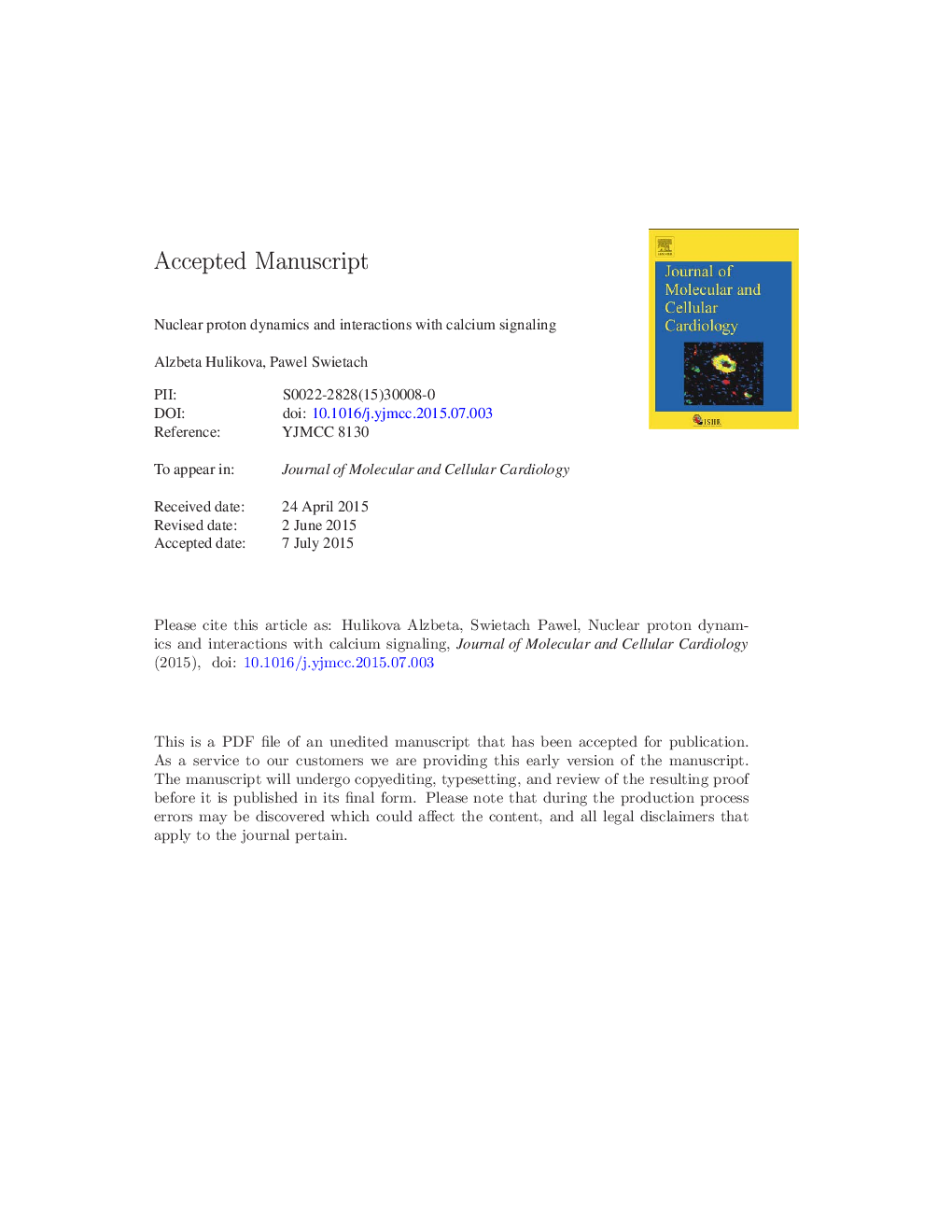| Article ID | Journal | Published Year | Pages | File Type |
|---|---|---|---|---|
| 8473795 | Journal of Molecular and Cellular Cardiology | 2016 | 30 Pages |
Abstract
Biochemical signals acting on the nucleus can regulate gene expression. Despite the inherent affinity of nucleic acids and nuclear proteins (e.g. transcription factors) for protons, little is known about the mechanisms that regulate nuclear pH (pHnuc), and how these could be exploited to control gene expression. Here, we show that pHnuc dynamics can be imaged using the DNA-binding dye Hoechst 33342. Nuclear pores allow the passage of medium-sized molecules (calcein), but protons must first bind to mobile buffers in order to gain access to the nucleoplasm. Fixed buffering residing in the nucleus of permeabilized cells was estimated to be very weak on the basis of the large amplitude of pHnuc transients evoked by photolytic H+-uncaging or exposure to weak acids/bases. Consequently, the majority of nuclear pH buffering is sourced from the cytoplasm in the form of mobile buffers. Effective proton diffusion was faster in nucleoplasm than in cytoplasm, in agreement with the higher mobile-to-fixed buffering ratio in the nucleus. Cardiac myocyte pHnuc changed in response to maneuvers that alter nuclear Ca2Â + signals. Blocking Ca2Â + release from inositol-1,4,5-trisphosphate receptors stably alkalinized the nucleus. This Ca2Â +-pH interaction may arise from competitive binding to common chemical moieties. Competitive binding to mobile buffers may couple the efflux of Ca2Â +via nuclear pores with a counterflux of protons. This would generate a stable pH gradient between cytoplasm and nucleus that is sensitive to the state of nuclear Ca2Â + signaling. The unusual behavior of protons in the nucleus provides new mechanisms for regulating cardiac nuclear biology.
Keywords
Related Topics
Life Sciences
Biochemistry, Genetics and Molecular Biology
Cell Biology
Authors
Alzbeta Hulikova, Pawel Swietach,
